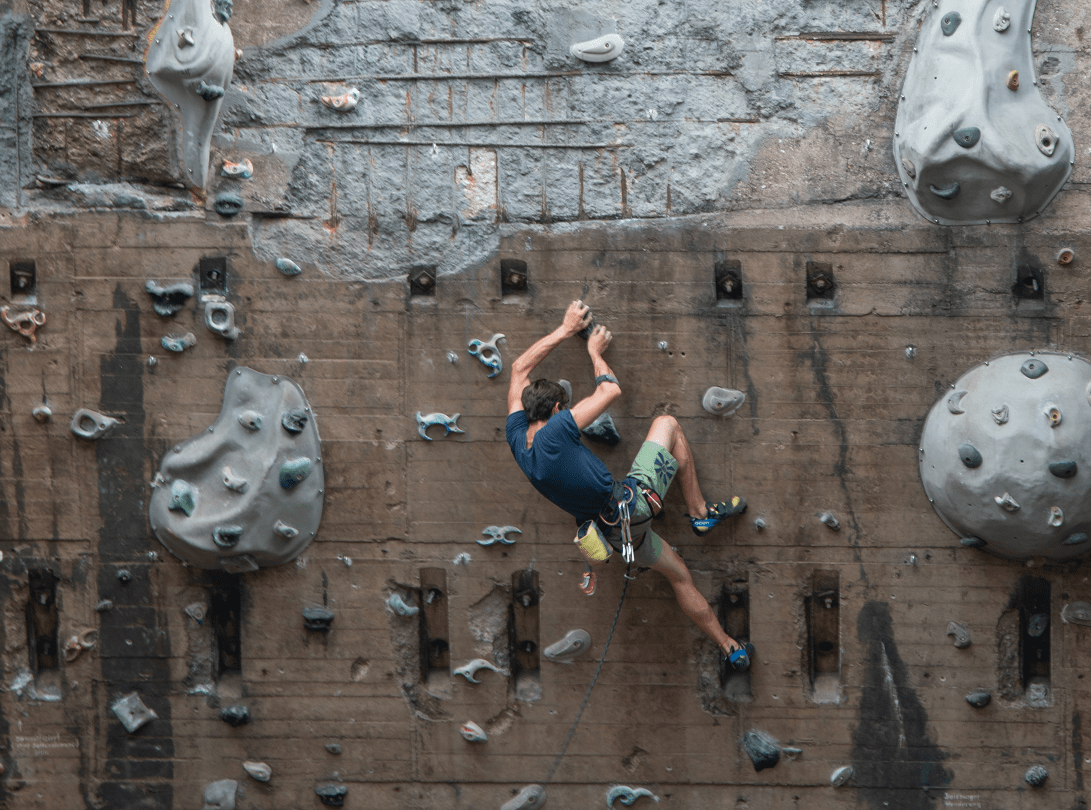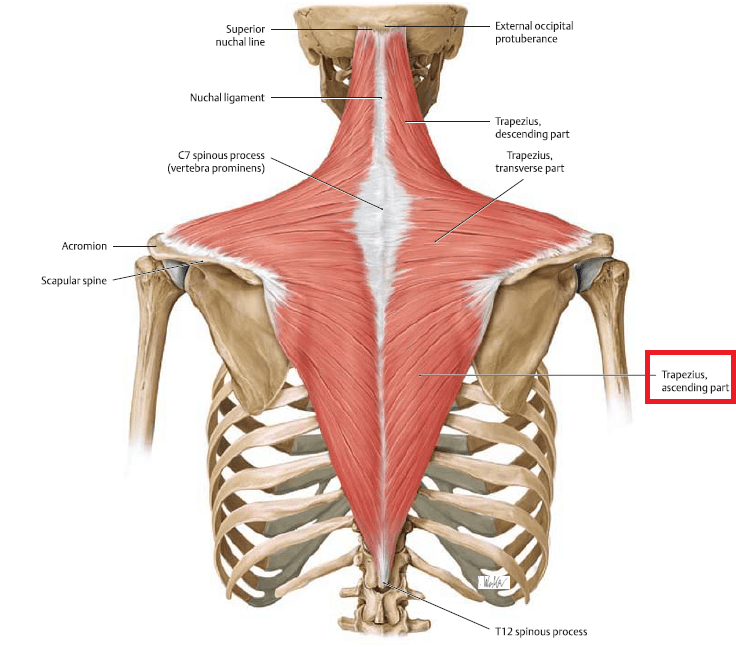The best exercises to relieve shoulder impingement are the ones that improve deficiencies around the shoulder. This means, that the exercises should focus on strengthening the shoulder stabilizers and the muscles around your scapula – mainly the lower trap. And besides that, exercises that mimic climbing movements which will load your shoulder right and prepare you to climb injury-free.
That’s why in this blog you’ll learn the one exercise that quickly relaxes your big back muscle. The latissimus dorsi is a dominant muscle while climbing, but when tense it increases the chance of shoulder pain. Furthermore, I show 2 exercises that target the lower trapezius muscle. This is the main muscle responsible for positioning your scapula correctly.
With these exercises you’ll be able to tackle your shoulder impingement head on.
And remember, “don’t wait until it’s over”. Even though this might help in the short-term. In the long term it never does.
So, get on it and give your shoulder the care it needs.
Let us dive in!
1. Pain-Free Isolation Exercises
Before you move on to my 3 favorite exercises for shoulder impingement you should be able to internally and externally rotate your shoulders without feeling any pain.
These are the famous “innies” and “outies”. Which are great exercises to start with when you have shoulder impingement, but I feel they’re often used in a one-size-fits-all approach.
They’re great to build basic awareness of shoulder girdle positioning and the ability to activate your rotator cuff. But once you achieved that goal, move on to compound exercises that involve pulling- or pushing and rotational movements.
2. Correct Shoulder Girdle Position
As I said, innies and outies can help you to practice correct shoulder girdle positioning while activating the rotator cuff.
Remember though, that your static shoulder girdle position when you’re doing nothing doesn’t say anything about the dynamic movement capacity in your shoulder girdle.
Meaning, that if you have a protracted shoulder girdle while standing, it doesn’t mean this inhibits you from moving correctly while climbing. Thus, if you want to be sure if your shoulder girdle is moving right, you should observe it while climbing or by doing exercises that mimic climbing movements.
By now you’re probably wondering, what is the correct position of the shoulder girdle?
I like to use the following metaphor with my patients:
“Put your shoulder blades in the back pockets of your pants”. Which means:
- Retracted: pulled back by activating the back muscles between your scapula’s
- Depressed: pulling your shoulder blades away from your ears by activating the ascending trap
It can be hard to maintain this position at first. That’s why I think it’s a great idea to start with isolation exercises, like innies and outies to practice.
Once you nailed those, and you’re pain-free doing them you can move on to compound exercises. I’ll come back to compound exercises in a bit. Because now it’s time to discuss my favorite exercises for shoulder impingement.
3. The 3 Best Exercises to Relief Shoulder Impingement in Climbers
Like I mentioned before, climbers often have similar postural faults because of the overhead pulling, pulling through, and strain on the fingers, hands, and arms.
3.1. Exercise #1: Latissimus Dorsi Stretch
I like the latissimus dorsi stretch a lot because I feel it gives my ability to reach overhead an instant boost. Besides, tense lats pull your shoulder girdle forward and internally rotate the upper arm. This increases the chance of inefficient movement patterns and shoulder pain.
You can do the latissimus dorsi stretch either by stretching it passively or using an active variant like “PAILS & RAILS”, which stands for Progressive (PAIL) & Regressive Angular Isometric Loading (RAIL). This a technique to teach the central nervous system to control newly acquired range of motion.
A passive stretch would mean you’d get into position and maintain a medium-intensive stretch while breathing relaxed. The ideal way to lengthen a muscle through stretching passively is as follows:
- Start with a slight stretch for 20-30 seconds
- Do a deeper stretch of 3x60seconds with a minute break in between
- Repeat 3x per week
Here is a great video by Sports Scientist Yiannis Christoulas on the science of stretching:
If you’re using PAIL’s & RAILS to stretch your lats, this is how to do it:
- Start with a slight stretch for 2 minutes
- Press your elbows down to activate your lats for 10 seconds
- Generate force in the opposite direction by lifting your elbows, but, don’t actually lift them, instead push your body down
- Alternate 6 times
3.2. Exercise #2: Pronated Y-Extension
The Pronated Y-Extension is a great exercise to target the ascending trapezius, the rear delts, and the external rotators of the rotator cuff.
To start, you don’t need anything to do a Y-extension. Once you get stronger you could add weight by using something like a bottle with water, sand, or a dumbbell if you have it. In the video below I show you how to do the Y-extension lying pronated on the floor. You could also do it by bending forward until your torso is parallel with the floor.
Aim for 3×15 repetitions with 1:30 minute rest between sets. As soon as you get stronger you can add weight and reduce the number of repetitions to 12, 8, and then to 5. Progressing over several weeks.
3.3. Exercise #3: Face Pull
I think the Face Pull is an excellent exercise against shoulder impingement in climbers because you have to retract your scapula and externally rotate your upper arm. The final position of the face pull is similar to grabbing a hold.
Just like with the Pronated Y-Extension start with 3×15 repetitions with 1:30 minute rest in between sets. Do these with a perfect technique for up to 6 weeks. After that reduce the repetitions weekly to 12, 8, and 5 repetitions per set.
4. Ideas Behind the 3 Best Exercises to Relieve Shoulder Impingement
You want to know the best exercises for shoulder impingement.
But why do you have shoulder impingement?
Luckily, as a rock climber, there’s just 1 possible reason: overuse.
So, what’s the reason for your overuse?
Did you increase your climbing intensity, frequency, or did you start climbing routes that force you into weird shoulder positions often?

This means that the best way to start solving your shoulder impingement is by reducing your climbing intensity until your symptoms level out. If this doesn’t work it’s best to take a break from climbing.
Then, it’s important to fix underlying issues such as:
- Weak rotator cuff muscles
- Weak scapular retractors
- Weak core muscles
- Lack of shoulder mobility
- Lack of thoracic mobility
- Shoulder instability
- Mental Stress
- Bad Climbing Technique
- Muscle Imbalance
As things go, these factors increase the chance of overuse injuries. This also means that depending on which underlying issues are contributing to your shoulder impingement, the best way to fix it varies.
Nevertheless, as avid climbers, you might have similar underlying issues. Mainly hypertension of the latissimus dorsi and the pectoralis minor muscle. And an underloaded ascending trapezius as a result. Because you use your lats and pec minor a lot during climbing, these muscles shorten. Pulling your
scapula up and to the front.
Since the ascending trap pulls the scapula down it has to lengthen to allow the repositioning of your scapula. Ending up weak as a consequence.

Because a muscle that works in lengthened position has to generate more force to move than a shorter muscle. This is the difference between lifting something close to your body (easier) and lifting something far away from your body (heavier).
So, the key to healthy shoulders is first, good shoulder mobility, and second good shoulder stability.
5. Moving on to (Functional) Compound Exercises
When you notice your shoulder pain is reducing, and you’ve moved down to a low number of repetitions of the exercises above it’s time to start doing compound exercises.
Why is that?
Because you should use your newly acquired strength in movements that engage your core more and translate well to climbing.
Think of exercises like:
- Ring Rows
- Pull-Ups
- TRX Face Pulls
- Scapula Push-up
If you’re thinking of adding push-ups to your exercise routine, be sure to read the blog where I discuss if push-ups are bad for shoulder impingement.
6. Important Take Away’s
In an ideal situation, shoulder impingement takes around 3 months to heal. Depending on the intensity of your shoulder pain, how long you’ve waited until looking for treatment, underlying issues, and the structure (if at all) that’s responsible for nociception – your healing time might be different.
The 3 best exercises for shoulder impingement that I discussed in this article aim to treat common issues in climbers that suffer from shoulder impingement. I recommend doing them for at least six weeks since that’s the amount of time it takes for hypertrophy to take place.
